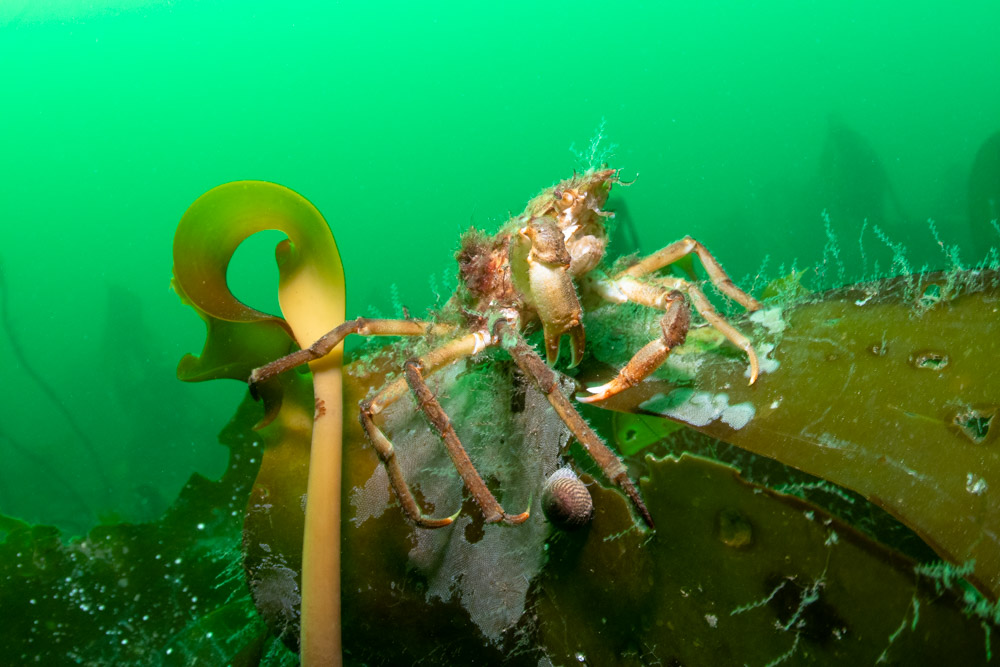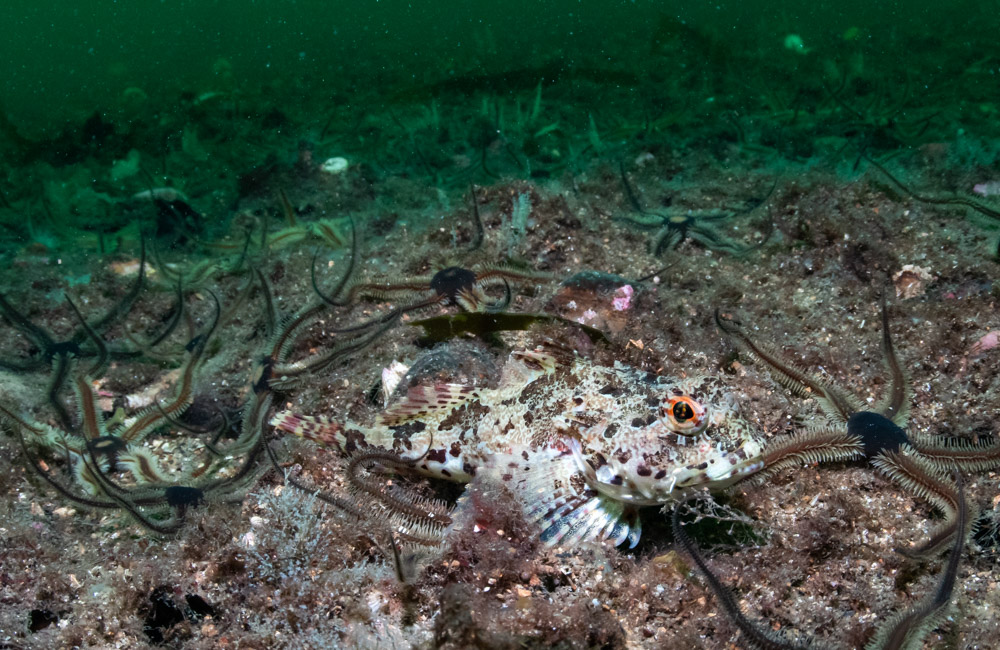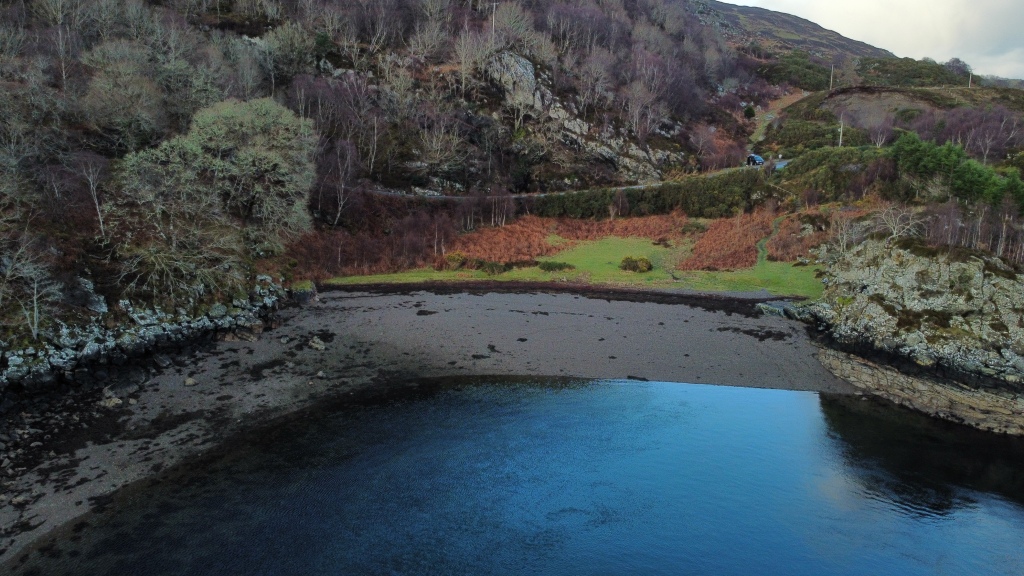There is a sign that always makes me smile on the drive around the head of Loch Carron, “Strome Ferry (no ferry)”. The other end of this disused ferry crossing is North Strome across the narrowest point of the Loch, 15 miles by road or 700 yards by water, and whose sturdy slipway at North Strome provides a most convenient entry to a superb dive site.
The tide powers through that narrow gap, emptying and re-filling the loch, twice a day and that energy means the sea bed is teeming with life. The substrate is rather special, actually. It looks and feels a little like leather, but is actually made from dead kelp fronds bound together by tiny fibres to create a giant mat over the seabed and so provide a haven for a mass of bivalves which shelter beneath, filtering food from the water. These Flame Shells are vulnerable because they cannot withdraw their tentacles and are rarely seen but above their protective covering there’s lots of activity.
My most recent visit in February, at a time when Scottish weather is at its least clement was also at a time of spring tides, when the flow is at its strongest. Yet at slack water, the underwater scene is deceptively peaceful. Although last year’s kelp fronds are tatty and soon to be replaced by this season’s growth, there is still plenty of activity and I spent a pleasant hour taking in the scene on series of dives at this site.


















